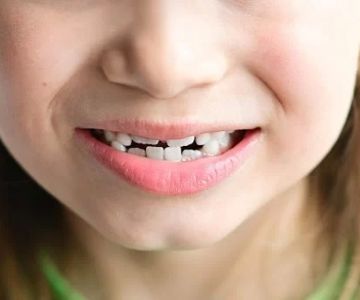How to Care for Dental Bridges: Essential Tips for Long-Lasting Results
- 1. Understanding Dental Bridges and Their Function
- 2. Why Proper Care for Dental Bridges is Essential
- 3. Effective Cleaning and Maintenance Techniques
- 4. Common Problems with Dental Bridges and How to Avoid Them
- 5. Expert Tips for Long-Lasting Dental Bridges
1. Understanding Dental Bridges and Their Function
A dental bridge is a dental restoration used to replace one or more missing teeth. It involves placing artificial teeth in the gap, which are anchored to adjacent natural teeth or dental implants. Dental bridges can be made from various materials, such as porcelain, gold, or a combination of both, depending on the patient's needs and preferences.
The Purpose of a Dental Bridge
Dental bridges not only restore the function of missing teeth, allowing for easier eating and speaking, but they also help maintain the structure of your mouth. Missing teeth can cause the remaining teeth to shift, affecting your bite and leading to further dental issues. Bridges help prevent this by keeping your teeth in their proper position.
2. Why Proper Care for Dental Bridges is Essential
Proper care and maintenance are crucial for ensuring the longevity of your dental bridges. Like any dental restoration, bridges can be prone to wear and tear if not properly cared for. Without the right care, they may become loose, damaged, or susceptible to gum disease and cavities.
Maintaining Oral Health
Bridges rely on healthy surrounding teeth and gums for support. If the adjacent teeth or gum tissue become infected, the stability of the bridge can be compromised. Regular brushing, flossing, and professional dental cleanings are essential to maintain both your natural teeth and the dental bridge in optimal condition.
Preventing Long-Term Damage
Dental bridges are a significant investment, and taking the necessary steps to care for them can prevent the need for costly repairs or replacements. Proper care also helps avoid issues like tooth decay, gum disease, and damage to the bridge material, allowing you to enjoy a healthy smile for years to come.
3. Effective Cleaning and Maintenance Techniques
Cleaning your dental bridge properly is the most important aspect of caring for it. Here are some effective techniques that will help you keep your bridge in great shape:
1. Brush Your Bridge Daily
Brushing your dental bridge daily with a soft-bristled toothbrush and fluoride toothpaste is essential. Make sure to clean both the bridge and the surrounding teeth. You should gently brush the surface of the bridge, taking care to remove any food particles and plaque that can accumulate over time. Be sure to clean any areas where the bridge meets the natural teeth to prevent plaque buildup.
2. Flossing with a Threader or Special Floss
Flossing is crucial for cleaning around the base of your bridge and between the adjacent teeth. Regular floss can be difficult to use around a dental bridge, so a floss threader or specialized bridge floss can make the task easier. These tools allow you to reach under the bridge and clean the area where plaque and debris often accumulate.
3. Use Antiseptic Mouthwash
Rinsing your mouth with an antiseptic or fluoride mouthwash can help reduce bacteria and plaque buildup. An alcohol-free mouthwash is recommended, as it is gentler on both your gums and the dental materials. A mouthwash with fluoride can also help protect the enamel of your surrounding natural teeth.
4. Regular Dental Visits
Even if you’re diligent about brushing and flossing, professional cleanings and checkups are essential for maintaining your dental bridge. Your dentist can remove plaque and tartar that you may have missed and check for any signs of wear or damage to the bridge. Routine dental visits help catch issues early before they become more serious.
4. Common Problems with Dental Bridges and How to Avoid Them
While dental bridges are a reliable solution for missing teeth, they can still encounter problems if not properly cared for. Here are some common issues that can arise with dental bridges and how to avoid them:
1. Tooth Decay
If the natural teeth supporting the dental bridge aren’t properly maintained, they can develop cavities. Plaque and food particles can get trapped around the bridge, leading to tooth decay. Proper cleaning and regular dental checkups can help avoid this problem.
2. Gum Disease
Gum disease can affect both your natural teeth and the area around your dental bridge. If the gum tissue becomes inflamed or infected, it can cause the bridge to become loose or uncomfortable. Good oral hygiene is essential to prevent gum disease and ensure the longevity of your bridge.
3. Damage to the Bridge
Dental bridges, like any dental restoration, can be susceptible to damage if not properly cared for. Chewing on hard foods or objects like ice can put stress on the bridge and cause it to crack or break. It’s important to avoid habits like chewing on pens or ice and to follow your dentist’s recommendations for food choices.
5. Expert Tips for Long-Lasting Dental Bridges
To ensure the longevity and functionality of your dental bridge, here are some expert tips to keep in mind:
1. Avoid Hard and Sticky Foods
Hard foods, like candy, nuts, and ice, can cause damage to your bridge over time. Sticky foods, like caramel and chewing gum, can also cause debris to get stuck around the bridge. It's best to avoid these foods or eat them in moderation to protect your dental bridge.
2. Address Any Discomfort Immediately
If you experience discomfort or notice that your bridge feels loose, it’s important to visit your dentist immediately. Addressing any issues early can prevent further damage and ensure that the bridge stays securely in place.
3. Maintain a Healthy Diet
A balanced diet rich in fruits, vegetables, and calcium can help maintain the health of your natural teeth and gums, ensuring that they continue to support your dental bridge effectively. Limiting sugary and acidic foods can also reduce the risk of cavities and gum disease.
4. Use a Night Guard if Necessary
If you grind your teeth at night, consider using a custom-made night guard. Teeth grinding can cause excessive wear on dental bridges and surrounding teeth, leading to damage. A night guard will protect your bridge and help preserve your dental health.







 Polaris Dental Care4.0 (170 review)
Polaris Dental Care4.0 (170 review) Crabtree Valley Dental4.0 (1019 review)
Crabtree Valley Dental4.0 (1019 review) Roybal Comprehensive Health Center: Mendoza Celia DDS5.0 (1 review)
Roybal Comprehensive Health Center: Mendoza Celia DDS5.0 (1 review) Seven Hills Dentistry4.0 (1109 review)
Seven Hills Dentistry4.0 (1109 review) Dental Smiles of Joliet4.0 (268 review)
Dental Smiles of Joliet4.0 (268 review) MDS Dental Solutions, LLC0.0 (0 review)
MDS Dental Solutions, LLC0.0 (0 review) The Importance of Oral Health Education During Pregnancy for a Healthy Pregnancy
The Importance of Oral Health Education During Pregnancy for a Healthy Pregnancy Best Tips for Brushing Your Teeth Properly for Healthy Gums: Essential Techniques for Oral Health
Best Tips for Brushing Your Teeth Properly for Healthy Gums: Essential Techniques for Oral Health Why Skipping Dental Checkups Can Lead to Bigger Oral Health Problems
Why Skipping Dental Checkups Can Lead to Bigger Oral Health Problems Advantages of Porcelain Dental Restorations
Advantages of Porcelain Dental Restorations How Can Diabetes Cause Tooth and Gum Problems? Preventing and Managing Oral Health Issues
How Can Diabetes Cause Tooth and Gum Problems? Preventing and Managing Oral Health Issues Healthy Habits for Promoting Good Oral Health and Hygiene: Tips for a Healthy Smile
Healthy Habits for Promoting Good Oral Health and Hygiene: Tips for a Healthy Smile